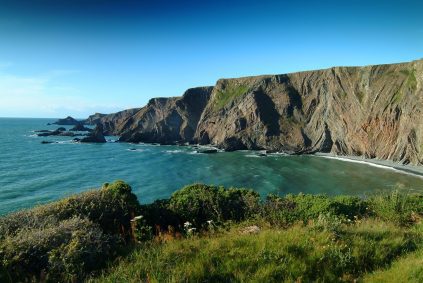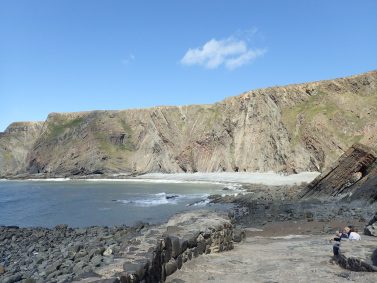The dramatic cliffs at Hartland Quay consist of folded Crackington Formation turbiditic sandstones and mudstones with two marine shales, the Longpeak and Hartland Quay shales.
Turbedites are caused by the slumping of underwater sediment that has piled up at the top of the continental slope or similar sub-aqueous structures. The rocks found at Hartland were possibly formed in brackish water with occasional marine water incursions.
In the upper Carboniferous a mountain building event caused by the closure of the Rheic Ocean and known as the Variscan Orogeny, resulted in compression of the rocks. These rocks were relatively new and pliable, causing the ‘chevron’ folds that can be seen in the cliff face today.
The area around Hartland Quay also has good examples of hogs back cliffs and also truncated valleys where the retreat of the cliff line, through erosion, has resulted in the valley floors being well above present sea-level
Please be aware of tides and approach cliffs with care – although the cliffs are relatively stable, there may be falling rocks.
North Devon AONB RIGS Report – Phase 1
Marsland to Clovelly Coast Geology
Hartland Quay
Beach Information
Weather & Tides



